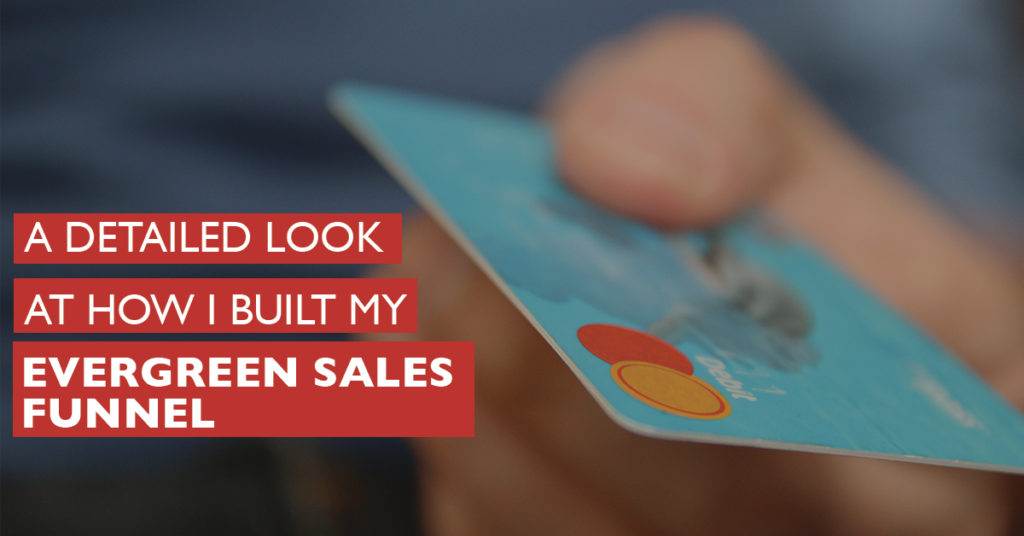 You’ve spent an INSANE amount of time yberreating that online course. You wrote, recorded, edited, launched, marketed, stressed out, and (hopefully) made some money with it.
You’ve spent an INSANE amount of time yberreating that online course. You wrote, recorded, edited, launched, marketed, stressed out, and (hopefully) made some money with it.
But what about today? The launch is long since over. Maybe you’ve even launched it a bunch of times, and are happy with those results.
What you may not be happy with, though, is how much launching takes out of you. Personally I’ve gone through all kinds of ups and downs during launch periods, and the ROI of that financial and emotional investment hasn’t always been a positive one.
(My most popular posts and podcasts have been about this very topic. Check out some honest numbers and lessons learned right here :
- Why My Recent Launch Bombed: a Postmortem
- 2015 Year in Review: Growing Pains are a Bitch
- You’ll Have to Pry These Bad Business Decisions from My Cold Dead Hands
- Claire Pelletreau: $4K in the Bank after a $10K Month)
Lots of entrepreneurs stick to the stressful launch model because they convert a lot better than just having those online courses for sale on their site. Launches have the urgency built in: enrollment periods that close, bonuses that disappear, early bird pricing that expires.
Urgency gets people to act. (FOMO, too.) It forces them to make a decision: to either buy your online course or not. A course that’s always for sale on your site tells me I can choose to buy it now, or leave that decision until later.
In most cases, “I’ll buy it later” translates to “I’ll buy it never.”
So how do some people sell online courses every single day without being constantly in launch mode?
With an evergreen sales funnel that has the urgency built-in.
Before I show you the details of my new funnel, let’s talk for a second about the different ways evergreen sales funnels can create urgency:
1. With disappearing enrollment. Melanie Miller talks in detail about her sales funnel on the Get Paid Podcast, where she explains that access to her membership site, the Profit Lovers Members Club, isn’t public. She doesn’t have a sales page that people can find by clicking around on her site. Instead, you have to opt into her video training series that eventually leads into a series of emails that invite you to become a member for a limited time. After that time period, enrollment is “closed.”
I say “closed” because people can enroll everyday, but only when that unique link for each subscriber is active.
2. With disappearing discounts, bonuses, or trials. In this case, the course may be for sale year round, but the incentive to buy – saving money, getting more bang for your buck, or the opportunity to try out the course or membership site without a big financial commitment – eventually expires.
3. With “opportunity cost” urgency. When you use this technique, the course is available whenever I want to buy it, but you create a sense of urgency by pointing out the opportunity cost.
Opportunity cost is the money or time that you end up wasting by not doing something. So when you try to grow your business without the help of a coach, or run Facebook ads without expert training (ahem!), or try and fail once again to lose those last 10 pounds without some advertised diet, you pay an opportunity cost: slow or no growth in your business; Facebook ads that drain your wallet and don’t get good results; or more time, effort and frustration when you fail to lose that weight.
If you’ve ever seen copy on a sales page that says something like, “Think about what you’re doing now, and the results you’re getting now. You’re going to keep getting those same results if you don’t change what you’re doing,” then you’re looking at opportunity cost urgency. The goal? To get you to change what you’re doing with the help of that online course.
Why Some People Will Hate You For Your Evergreen Sales Funnel
I probably don’t have to tell you that lots of people are afraid of being “too salesy.” They don’t want to come across as pushy, and they hate it when others come out and ask for the sale directly.
I’ve heard from lots of people that they felt like they were duped by marketing that was “too” effective. That they really shouldn’t have bought X online course, but that they got caught up in all the buzz of a launch and didn’t want to miss out. #FOMOisreal
I’ll admit it, I felt a little uncomfortable about manufacturing urgency in my sales funnel . . . until I remembered 2 important things:
- According to existing customers, my online courses are outstanding and truly help people become savvy marketers, and
- People can request refunds for any of my courses within 30 days of buying, no questions asked.
So if I do my job and market the shit out of my courses in an evergreen sales funnels, then some of the wrong people are going to buy. It’s just what happens when you have great offers and a strong funnel. They might be people who are too advanced for the material or who don’t benefit from my particular teaching style. But those people can get their money back, and there’s no bad blood on either side.
I want you to remember that when you add in urgency to your evergreen funnel with enrollment periods or discounts that expire, some people are going to hate it. (And they might be pretty vocal about it.)
But guess what? Those people were probably never going to buy from you anyway. So let them be upset by your marketing, mentally tell them to STFU already, and move on.
Because while your funnel will invariably turn some people off, it’s also gonna convert a lot more new customers than back when you just had your courses for sale on your site 24/7.
A Detailed Walkthrough of My New Evergreen Sales Funnel
I recently finished implementing a new sales funnel that employs technique #2: disappearing discounts AND bonuses. The funnel was designed and written by the team at Your Hot Copy, which I then edited to match my brand and voice more closely.
Here’s a peek behind-the-scenes. Warning: this post is about to get CRAZY detailed. ?
The Evergreen Product:
My self-study Facebook ads course, Absolute FB Ads + Support Group.
The Opt-In:
I only have 2 evergreen opt-ins at the moment; the one that leads into this funnel is my free guide to list building with Facebook ads. Links to this guide are found all over my site.
The Tripwire:
After signing up for the free guide, Jane the New Subscriber gets directed to her inbox to download the PDF and to check out a special offer available for a limited time.
The offer is 50% off an already low-priced course of mine, but only if she buys before the end of that day. Both the email and the sales page for this tripwire product include Deadline Funnel timers that show how much time is left before the offer expires.
If she buys the tripwire product, she’s taken out of this email sequence and added to a new one. More on that below.*
K-L-T Sequence:
If Jane doesn’t buy the tripwire product, she gets 3 more emails from me designed to help move her through the Know-Like-Trust process with me and my business. Email #1 tells her about me and my story, #2 talks about 3 common mistakes people make with their ads, and #3 explores the question “what’s a good conversion rate?”
Those emails go out 3 days after Jane opted in (#1), then 4 days later (#2), then 5 days after that (#3).
Tripwire Offer, Redux:
5 days after she gets the email about conversion rates, Jane receives another that pitches the tripwire product again. There’s another discount involved, but instead of 50% off, this time the discount is 25%. Again, she has until the end of the day to grab this course before the discount disappears. If she buys the tripwire product, she is removed from this sequence and added to another one.*
More K-L-T Emails:
The next 3 emails (sent 5, 3 and 3 days after the last one) all teach something that’s important for Jane to know in order to run successful Facebook ads. The last two emails in this sequence actually mention the course this whole funnel is designed to sell, but there are no links to the sales page. The goal of these emails is to both teach Jane and to intrigue her a bit, planting the seed in her mind that she can go deeper on this topic by buying this online course.
The Pitch:
2 days later, Jane gets the first of 4 emails that make up the final set of this funnel. It’s about why she shouldn’t hire me (or anyone else) to run her Facebook ads. Instead she should learn to master Facebook ads on her own! And my course, Absolute FB Ads, is how she can do it. This email is the first time Jane gets a link to an Absolute FB Ads sales page.
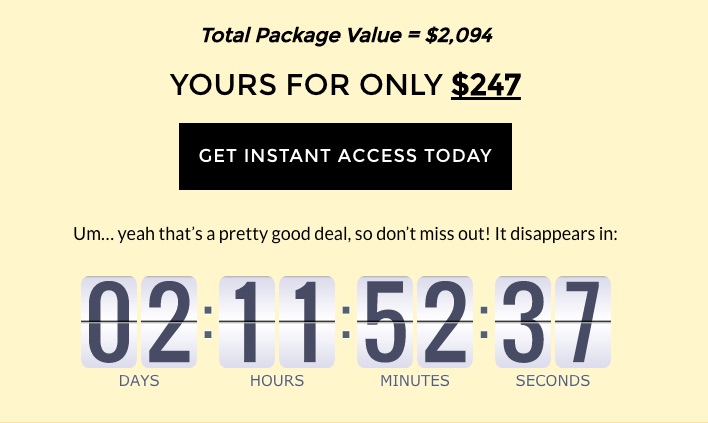 It’s not a page that you can find anywhere my site, however. I’ve sweetened the deal with both a small discount ($50 off) and two bonus courses, one of which was the tripwire product. I call it the Facebook Ad Bundle, and Jane can buy it for the next 3 days.
It’s not a page that you can find anywhere my site, however. I’ve sweetened the deal with both a small discount ($50 off) and two bonus courses, one of which was the tripwire product. I call it the Facebook Ad Bundle, and Jane can buy it for the next 3 days.
*If Jane bought the tripwire product at any point, these pitch emails only mention one bonus course, and the price is even lower ($90 off).
The very next day, Jane gets another email pitching this bundle, one that details a simple tactic that allowed me to 13X my investment in a specific campaign.
On the last day that the bundle is available, she gets two more emails reminding her that the offer expires at midnight EST. The first one emphasizes the value of the Absolute Support Group, and the second one simply serves as a reminder, 3 hours before the deadline.
Requesting Feedback
If at any point Jane clicked on a link for the bundle sales page, she was automatically added to an additional sequence. It has just one email that Jane would get after completing the entire funnel if she didn’t buy the bundle. The email asks what stopped her from pulling the trigger and buying the bundle. This is how we’ll collect feedback from subscribers about the offer and the effectiveness of the funnel.
How to Set Up This Evergreen Funnel With ConvertKit and Deadline Funnel
I’ll be honest: implementing a funnel of this complexity is not easy, but if I can do it while baby napped just a couple hours a day, I have no doubt that you can do it too!
Here’s what you’ll need:
- A ConvertKit account (if you’re smart you’ll get one ASAP)
- A Deadline Funnel account (try it out for free)
- 3 tripwire sales pages:
- 50% off
- 25% off
- Evergreen price
- 3 main product sales pages:
- Bundle with discount + 2 bonus courses (page has countdown timer)
- Bundle with discount + 1 bonus course for people who purchased the tripwire product (page has countdown timer)
- Evergreen sales page (no countdown timer)
- Course delivery sequences:
- Tripwire product delivery email(s)
- Bundle with 2 bonus courses delivery email(s)
- Bundle with 1 bonus course delivery email(s)
Here’s how I broke down the above mentioned emails into sequences in ConvertKit: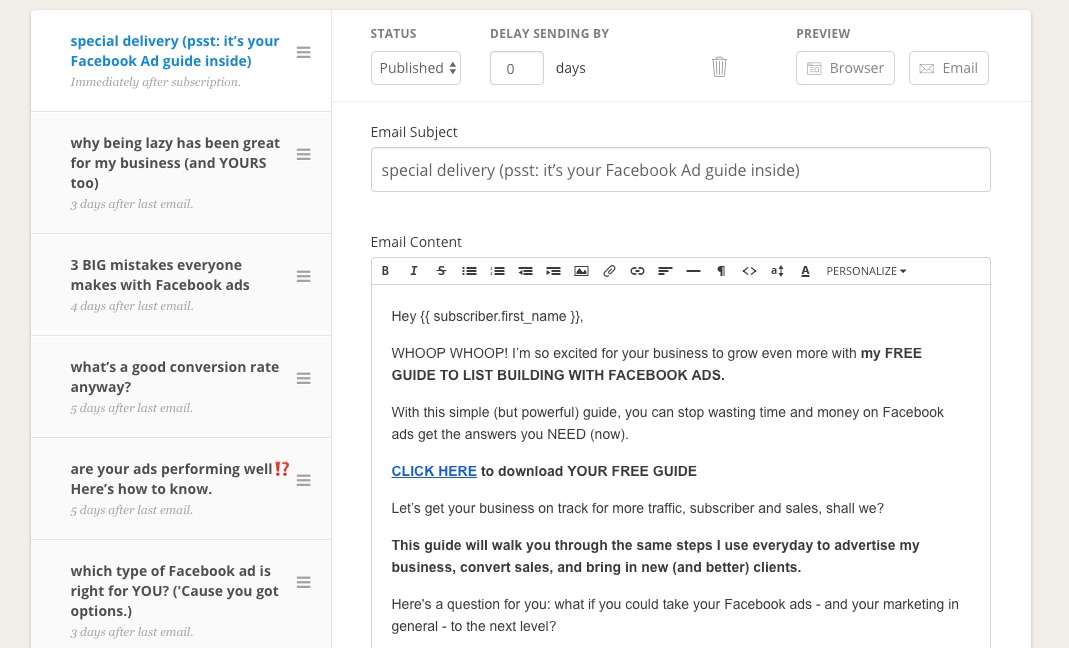
- Evergreen Funnel A: 10 emails total – PDF delivery + pitch for tripwire, includes countdown timer in email
- K-L-T email
- K-L-T email
- K-L-T email
- 2nd pitch for tripwire, includes countdown timer in email
- K-L-T email
- K-L-T email
- K-L-T email
- 1st email pitching the bundle, includes countdown timer
- 2nd email pitching the bundle, includes countdown timer
- Evergreen Funnel B: 1 email total
- Pitch for the bundle on the morning of the day the offer expires. Includes countdown timer.
- Evergreen Funnel C: 1 email total
- Final pitch at 9pm EST, 3 hours before offer expires. Includes countdown timer.
- Feedback Request Sequence: 1 email total (people who clicked on the link to the bundle sales page are automatically added to this sequence)
- Email asking for feedback: why didn’t they buy?
Below is the alternative sequence for people who bought the tripwire product early on in Evergreen Funnel A.
The only difference between this and the above sequence is that the pitch for the bundle only mentions 1 bonus course, not 2.
- Evergreen Funnel A (Post-Tripwire): 5 emails total
- K-L-T email
- K-L-T email
- K-L-T email
- 1st email pitching the bundle, includes countdown timer
- 2nd email pitching the bundle, includes countdown timer
- Evergreen Funnel B (Post-Tripwire): 1 email total
- Pitch for the bundle on the morning of the day the offer expires. Includes countdown timer.
- Evergreen Funnel C (Post-Tripwire): 1 email total
- Final pitch at 9pm EST, 3 hours before offer expires. Includes countdown timer.
- Feedback Request Sequence: 1 email total (people who clicked on the link to the bundle sales page are automatically added to this sequence)
- Email asking for feedback: why didn’t they buy?
Here are some of the automation rules we use to make everything happen in ConvertKit:
- Free guide opt-in –> Add to Evergreen Funnel A
- Tripwire 50% off purchase –> Add to EF A (Post-Tripwire)
- Tripwire 25% off purchase –> Add to EF A (Post-Tripwire)
- Completes EF A –> Add to EF B and EF C
- Completes EF A (Post-Tripwire) –> Add to EF B (Post-tripwire) and EF C (Post-Tripwire)
- Clicks bundle sales page link –> Add to Feedback Request Sequence
There are more rules related to purchases in Gumroad, delivery email sequences and interest tags, but I don’t want to overwhelm you with all that. If you’re interested in learning more about the detailed automation involved, let me know in the comments.
So . . . How’s It Working?
I’ve only recently finished implementing everything, so I don’t have much data for you yet! But I can tell you that the email open rates throughout Evergreen Funnel A are quite high, and that I’m already thinking of changing up the tripwire product based on initial numbers.
My goal here isn’t to impress you with all the money I’m making or some insane conversion rates. A surprisingly small number of course creators have evergreen funnels with built-in urgency like this one in place, so I wanted to provide you with a roadmap in case you’re interested in trying one out.
Don’t Make My Mistake
It took me a ridiculously long time to put any kind of nurture sequence in place. But when I finally bit the bullet, upgraded to a paid plan with Mailchimp, and sent new subscribers a series of emails that shared my top blog posts, my story, and links to my services and course pages, I started getting a lot more clients and customers.
? I probably wouldn’t have struggled so much revenue-wise if I had just sat down and created that sequence a lot earlier on in my business. ?
The other thing I wish I had done sooner was switch over to ConvertKit. Since I was already on a paid plan with Mailchimp in order to get their automation feature, my costs would have been exactly the same. But I would have had fewer lists and subscribers to migrate over, making the whole process a lot easier.
I haven’t used Mailchimp in a long time, so I can’t honestly speak to what features they do and don’t have right now. But I can tell you that ConvertKit’s user experience is better than any other email provider I’ve used (and I’ve used most of them through my client work).
What did you think of this post?
Was it helpful? Confusing? What other info could I add to make it even more useful? Let me know in the comments below!
Full disclosure: this post includes affiliate links. If you sign up for ConvertKit or Deadline Funnel, I may earn a commission at zero cost to you.

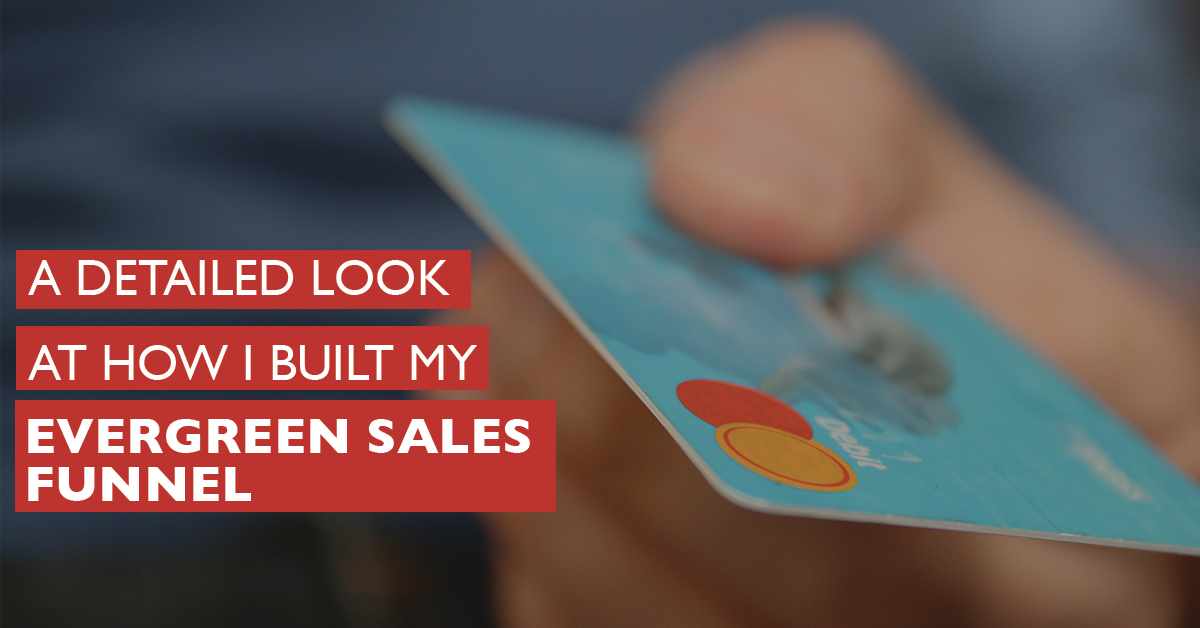





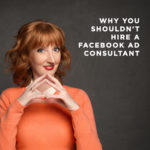



Hi Claire
This is a great article – exactly what people like me who are just getting started with their full sales funnels (funnels that have a variety of outcomes) need – a real blow step by step walkthrough. I use ConvertKit already so seeing what someone else does for real helps a lot. I wondered what you are using for your landing and sales pages? Just integrated into your blog site as inaccessible pages or Clickfunnels etc… My only suggestion is to may be consider adding a flow chart (Im too lazy to do up my own base don what you’ve written :-) ). Thanks again Claire. I’ll try and post a link to my forums.
Hey, thanks so much for reading AND sharing this, Mark!
I’m using plain old Wordpress – a few of the pages are created with Divi Builder but that’s about it.
I absolutely agree about the flow chart – I almost created one but wanted to get this post out there ASAP! It’s on my to-do list though. :)
Awesome post! I have an evergreen sales funnel but you gave me some ideas to improve it :)
Thanks so much, Yamile! It’s always a pleasure to see you ’round these parts. :)
Yes, exactly what I need now. Would love to have a more detail on the automation involved.
Hey Joy, this SHOULD be all the different automation pieces for you:
For anyone who…
buys tripwire course at 50% discount
– added to tripwire course sequence
– tagged with tripwire customer: $24
buys tripwire course at 25% discount
– added to tripwire course sequence
– tagged with tripwire customer: $35
buys Bundle after buying tripwire course
– added to Bundle sequence MODIFIED (“No tripwire”)
– added to bonus ebook sequence
– tagged with Bundle W/O Tripwire customer
buys Bundle without tripwire course
– added to Bundle sequence
– added to bonus ebook sequence
– added to tripwire course sequence
– tagged with Bundle W/ Tripwire customer
Hi! Love the post. I also use convert kit, but still learning. I’m curious to know if you remove people from a sequence once it completes. I’m trying to see if it would make send to remove them and put them on a general announcements sequence, or is it better to leave them on the sequence. What to you think?
I recommend adding some tag that says “Completed Sequence.” That way you don’t have to remove them but you know who to avoid sending general announcement emails to, you know?
Great info, Claire. Perhaps I missed it above, but I was wondering how you are triggering the Deadline Funnel countdown. Are you using Zapier or a link to trigger?
Awesome post. I would love more detail on the automation involved. Thanks for this post.
Thanks Vanessa! I added those details in a comment below.
now that you’ve run it for a bit, I’d like to know how your conversions are going. Is it working out as planned?
Hey Joyce! Honestly, it’s not. This weekend I’m shortening it dramatically and finally switching out the tripwire for one that’s much more closely related to the free guide they download.
funny, I was doing the same thing this weekend.
Update: the new tripwire is killing it with a 10% conversion rate. Currently seeing how FB ad traffic responds. Lesson learned: the tripwire should be DIRECTLY related to the free offer. I knew it the whole time but was hoping it wasn’t true since I didn’t have a good one to offer.
Thank you! This is one of the best articles on this topic I’ve read. I’m new to online courses, convertkit marketing and this whole business model. I have been in digital and online publishing forever so your automation and sequence explanations reach the geek in me. It’s something I’m working on today in convertkit, for my online course. This is my first attempt at this, and you’ve inspired me.
Thanks so much for the kind words, Mitch! Check out my convo with Joyce below, there’s a bit of an update if that helps.
Great post! I would be interested in a few details about integrating Deadline Funnel with Gumroad. Could you tell us a bit more?
Thank you!
Hey Steph! What do you want to know specifically? I didn’t do anything to integrate the two since I have a Gumroad buy button embedded on a Wordpress sales page. The DF timer goes on that sales page, not on the Gumroad page. Does that make sense?
Brilliant post! Thank you!
Awesome post! I am looking to create a similar funnel and am new with convertkit, so I’m happy I can follow along with your steps!
Hi Claire! Love this article… I have a question! How do you active and deactivate the “secret link” to the Bonus sales pages during the funnel? Because, maybe someone starts the funnel today and another person will start it next week, how do you keep the link updated according to when the people start the funnel?
Hey Nathalia – We use Deadline Funnel for this – it tracks based on IP addresses I believe and is pretty easy to set up once you sign up! :)